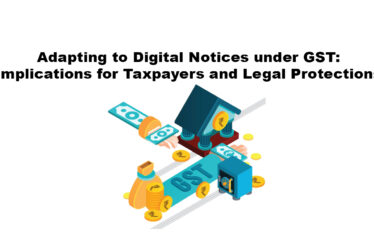One of the major sources of collection of Direct Taxes in India is by way of Tax Deduction & Tax Collection at Source (TDS & TCS). It has become a key revenue collection method for the Central Board of Direct Taxes (CBDT). A person (deductor) who is liable to make payment of specified nature to any other person (deductee) has to deduct tax at source and remit it into the account of the Central Government. Almost more than 40% of direct tax collection is contributed by TDS and hence more reliance is placed by authorities across the world on collection through TDS by tapping and covering more and more areas under the net of TDS.
Benefits for the Tax authorities:
From the Government’s point of view, this is the easiest & most economical tool so far as the administration is concerned. Since the liability to deposit the tax is on the payer of income, it becomes easy for the government to collect taxes and keep a check on payers rather than tracing a large number of receivers of income. It helps in a regular & smooth fund flow instead of waiting for quarterly advance tax payments. It also helps to trace & keep track of the taxpayers especially the non-filers, as it identifies the person whose tax is deducted. This acts as an impediment as such persons’ names and other vital particulars are now available with the taxman and not wanting any questions, would make them tax compliant which could have been avoided otherwise.
From taxpayers’ point of view, the tax getting deducted is comparatively smaller then what a person would have paid by way of advance tax on a quarterly basis. Thus he does not feel the same pinch as the case would be while paying advance tax.
Authorities across the world have understood this and adopted different systems of deduction/collection of tax at source depending on the peculiar nature of business environment & income. Indian authorities too, over the past years, especially in the past few years, have gradually spread the net of TDS / TCS to cover more incomes and also used it as a tracking mechanism to effectively keep an eye on tax evasion.
Steps by authorities in recent years to spread the TDS net:
Some of the recent measures introduced by the government with a view to spreading the taxpayers net and collection of tax include which is also helping them to keep an eye on specified transactions, transactions above specified limits and other transactions that would have escaped tax nets.
- From the year 2011-12, the seller of coal, lignite and iron ore has been mandated to collect a 1 % ad hoc tax from the buyers.
- Finance Bill of 2012 required the jewelers to collect 1% of the Selling price if its in excess of Rs. 2 lacs and is paid in cash
- Finance Bill 2013 introduced section 194IA which required a person purchasing an immovable property (other than rural agricultural land) of Rs. 50 lac or more to deduct tax at 1% from the payment made to the seller
- Finance Bill of 2014 introduced a new section 194DA w.e.f. 1st October 2014 and is applicable to policy payments that are not exempted under the Sec10(10D), under which Insurance companies will deduct TDS while making the payments on such claims if the amount received is more than one lakh rupees.
- Finance Act 2016 introduced new section 194LBC, where any income is payable to an investor, being a resident, in respect of an investment in a securitisation trust, TDS will be deducted
- Finance Act 2017 has brought about 5% TDS to be deducted on rent paid by individuals & HUFs even though not covered under business income or audit provisions
- Finance Act 2019 introduced 2 new sections 194M wherein, an individual or HUF making payments in respect of contractual work or professional services (i.e under s. 194C and 194J) in excess of INR 50 lacs in a year are required to deduct TDS and section 194N to provide levy of TDS at 2% on cash payments in excess of INR 1 crore in aggregate made during the year, by a banking company or a co-operative bank or post office, to any person from an account maintained by the recipient.
Compliances for the Tax Deducted:
When it comes to the compliance part, the tax deducted during a month has to deposited into the government’s treasury by the 7th of the next month except for the month of March for which due date is 30th April. Apart from the monthly payments, the Returns for the TDS are to be filed every quarter on due dates as detailed below:
| TDS return for the Quarter | Due Date for filing of Return for |
| Quarter ending 30th June | 31st July |
| Quarter ending 30th September | 31st October |
| Quarter ending 31st December | 31st January |
| Quarter ending 31st March | 31st May |
Penal Provisions:
Keeping in mind the importance of discharging the liability of paying the amounts collected by the deductors on behalf of the government, various provisions have been made to deter them from any non-compliance in this regard as mentioned below:
- TDS Interest for late deduction: 1% from the date on which such TDS was deductible up to the date on which such TDS is deducted; and
- 1.5% from the date on which such TDS was deducted up to the date on which such TDS is paid
- Penalty for failure to Issue TDS certificate: Rs. 100/- every day for the period failure continues subject to a maximum of the TDS amount.
- 1st July 2012 onwards, a delay in providing the eTDS statement will end in a compulsory fee of Rs. 200 per day till the return is filed. However, in this case, the total fee does not exceed the total amount of TDS deducted for the given quarter.
- In case of non-deduction or non-payment of tax deducted at source (TDS) from certain payments made to residents, the entire amount of expenditure on which tax was deductible was disallowed under section 40(a)(ia) for the purposes of computing income under the head Profits and gains of business or profession”. This has been reduced to 30% by the Finance Act 2014
Regulating body for TDS:
The TDS Reconciliation Analysis and Correction Enabling System (TRACES) of the Income Tax Department allow online filing of TDS Returns & correction of already filed TDS returns. TRACES has been set up by TDS Centralised Processing Cell of the income-tax department to process the returns, raise queries, reflect the mismatches and allow correction in case of defects whereby the Tax deducted is correctly reflected in the deductees’ account. Although the actual operational aspect is quite tedious when it comes to the defects reports & its correction, it can be said to be quite efficient in processing the tons of TDS returns filed quarterly across India.
So, is TDS tedious?
With the advent of technology in terms of filing, processing, reflecting tax in the accounts of taxpayers, generating reports TDS has not been a tedious process it used to be a couple of years ago. But while it is appreciated that, from government’s point of view, this is the most effective method of tax collection as far as the administration of the tax collection and tracking mechanism is concerned, authorities need to have a relook at the hardship faced in terms of the penal provisions and the blockage of funds.





